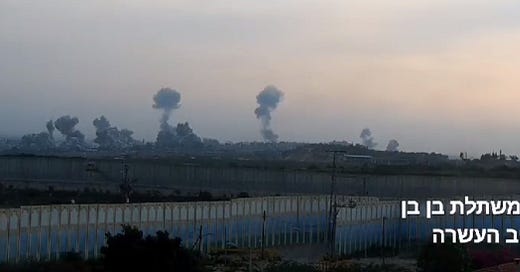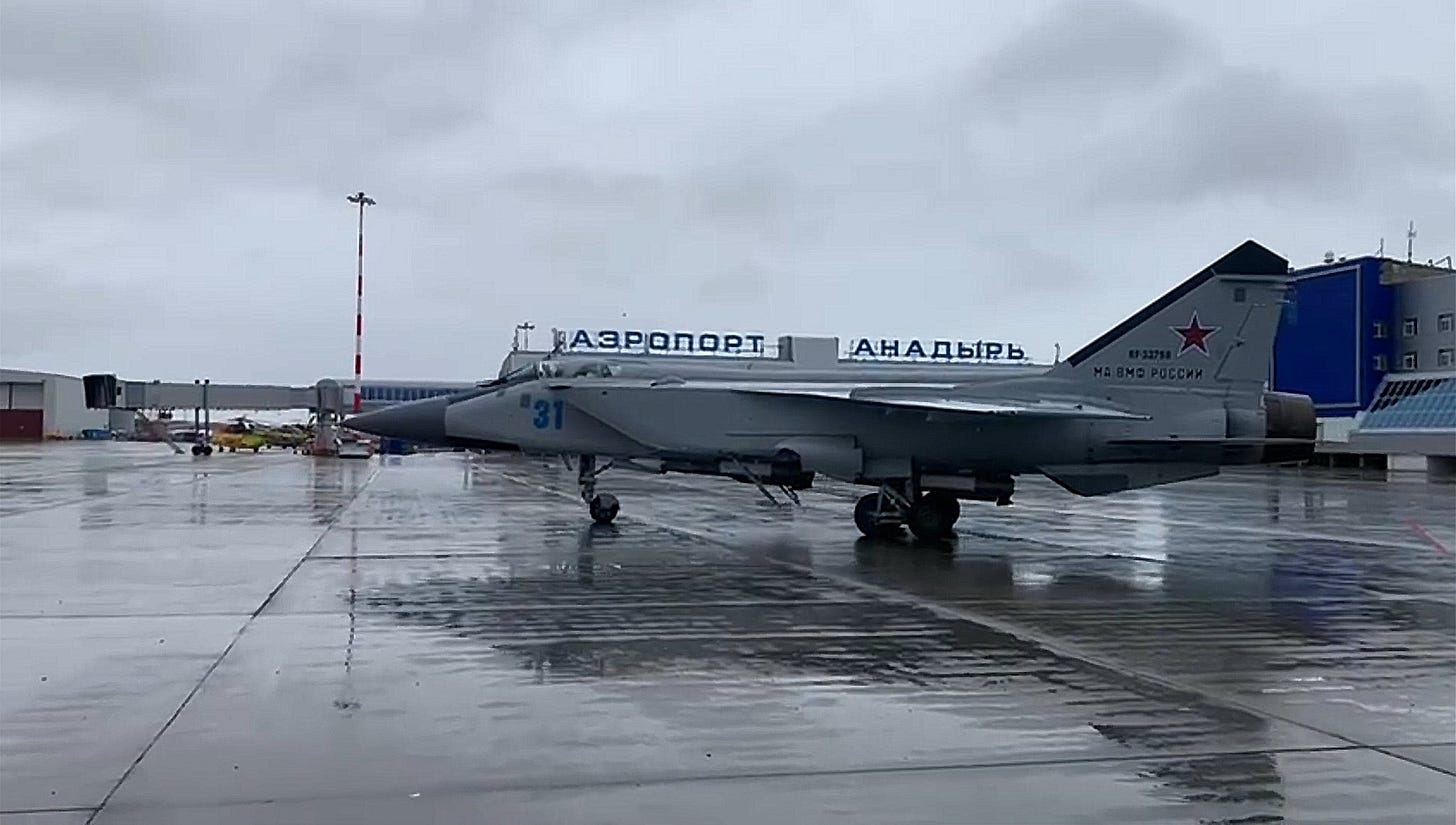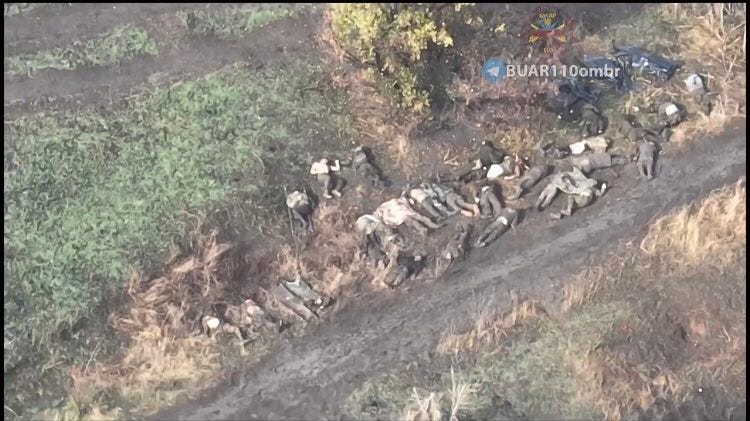Hello everybody!
I know, for today, I’ve ‘announced’ publishing something about the Russian glide bombs and their use in Ukraine. However, so many questions came my way the last few days, and there is so much demand, that I’ve got no other choice but to post a Q&A session instead.
I’ll start with few Israel/Palestine-related questions before moving over to the War in Ukraine.
***
Israel/Palestine
Q: I did read your comment on the Israel/Palestine War, but I’m unable to comment on it.
A: Yes, have disabled all the commenting on my reporting on Israel/Palestine. The reason is that I started wasting my time with trying to explain exactly the same set of facts to lots of different people – who did not even care about my answers, but were appearing here with intention of accusing, impressing propaganda and prejudice upon me, and everybody else. Sorry, but I’ve got better things to do.
Q: Where is the objectivity in your discussions?
A: I’m trying to exercise it all the time. Feel free to point me at where am I failing in that: kindly be specific, otherwise you’re exercising useless criticism, instead of useful critique.
Q: Hamas has always used it’s (sic) people as a human shield!
A: Hamas is a terrorist organisation of Palestinians following the ideologies of the Muslim Brotherhood. That’s beyond any doubt.
Yes, there are lots of claims about Hamas ‘using civilians as human shields’, and they are widely published, every single day, by Israel and its supporters in the West and in India, for example. That’s beyond any doubt, too.
Problem: there is no evidence for any such claims.
Please mind: thousands of reporters have reported about the Arab-Israeli conflict over the last 75 years. Hundreds did so from the Gaza Strip and the West Bank over the last 20 years. Yet, not one could ever find evidence for any of Palestinian militant or terrorist organisations using ‘own’ (Palestinian) civilians as ‘human shields’.
Indeed, and contrary to what the mass of people think – foremost people who are monitoring this conflict ‘one day in 20 years’, and thus are easily sold the Israeli legend about ‘human shields’ (see there: I’m exercising objectivity, right here) - multiple human rights organisations constantly monitoring this conflict are continuously reporting that there is no evidence for Hamas using Palestinian civilians as human shields.
‘Classic’ examples for related investigations and reports would be such like this one by the Amnesty International, this one by the Human Rights Watch, or these two by Jeremy Bowen and Kim Sengupta.
On the contrary, Israel has publicly declared that it is applying disproportionate force to cause great damage and destruction, and for considering civilian municipalities for ‘military bases’. That’s called the Dahiya doctrine (after a quarter of Beirut where it was applied for the first time).
Worst of all: there are hundreds of well-investigated cases providing plentiful of evidence that Israel is using Palestinian civilians as human shields. This is confirmed by Israeli human rights group B’Tselem, too. Indeed, this practice became so popular within the IDF, that the Israeli High Court ‘even’ attempted to outlaw it: the IDF appealed and the decision was reversed.
Correspondingly, it is on hand that the claim about ‘Hamas always using Palestinian civilians as human shields’ – is a lie.
….and the practice of blaming the other side for what one is doing should be nothing new. Indeed: and just like in the case of so many of its accusations, Israel is all the time blaming Palestinian militant- and terrorist groups for what Israel is doing.
(Of course, the people asking me questions of this kind are free to provide evidence that everybody else is wrong, and they are right. I’m looking forward for the evidence in question, and will be happy to publish it.)
Q: Start with accepting Israel/Do you accept Israel?
A: a) I never did anything else (why should I?), and b) yes.
Israel was officially granted the right to exist through the means of international laws and regulations. Period.
I do ‘like to remind’, though, that this right was granted on condition of Israel not violating the human rights of the native population of Palestine. This was so in the case of every single related declaration and/or decision since the Balfour Declaration of 1916. It is not my fault if Israel has made violations of the rights of the native population of Palestine a matter of its own official policy and military doctrine. Indeed, if I’m supposed to exercise objectivity in my analysis, it is very much my duty to point out all the misdeeds. So also those of Israel.
Finally, I would also like to remind that, contrary to what different of Israel’s propagandists and wannabe-supporters in the West are insistent upon, critique of Israel is no ‘anti-Semitism’. It is critique of official Israeli politics, military doctrine, and other misdeeds. Period.
***
Ukraine War
Q: I've read about MIG-31 caps over Black Sea, but armed with Kinzals. What is this menacing??
A: ‘CAP’ stands for ‘combat air patrol’ (and ‘caps/CAPs’ is plural of the same).
AFAIK, MiG-31Ks of the VKS are never flying CAPs while armed with Kinzhals. Either they are armed with Kinzhals and then sent to strike a selected target, or they are parked on the ground.
R-37-armed MiG-31BMs, though, are flying near-constant CAPs over the occupied Crimean Peninsula because that’s their very task: protection of ‘own/Russian-controlled’ air space from enemy- (in this case: Ukrainian) air- and missile strikes.
Kinzhal-armed MiG-31s deployed on the Crimean Peninsula (or other air bases further East/South-East) must be expected to be deployed in the next ‘round’ of Russian onslaught on the Ukrainian energy-supply-network, and capability to continue exporting grain from its southern ports, in the coming months, though.
Q: BBC news headline this morning (note: this was about a week ago) was that Ukraine is complaining that Russia is bombarding the supply road to Avdiivka. Seems a weird headline.
A: This report was correct (and remains correct, because the VKS is continuing such operations until this very day), and indeed: this is perfectly logical thing to do (for the Russians). They are deploying MPK/UMPK glide bombs to strike roads leading to Avdiivka, in attempt of preventing the ZSU from re-supplying its units holding positions there. This is so logical because if one runs out of ammunition, food, water, spare parts etc., one simply can’t fight. In this case, that would mean: if the ZSU units deployed inside the Avdiivka bulge run out of ammunition, food, water, spare parts etc., they can’t defend the area.
Q: Do you think the "leasing equipment for Air Defense" strategy will be a powerful improvement for the Winter season?
A: ‘Powerful’ – not. But ‘welcome’. AFAIK, the PSU has just received another IRIS-T SAM-system; at least six MIM-23 HAWK SAMs are in service now, too. Means: the PSU should have it better while trying to defend most important installations around the country. That’s why ‘welcome’.
However, this is still far from being ‘enough’: it is not enough to properly defend all the crucial installations in the rear, and woefully insufficient to cover ZSU units deployed along the frontlines.
Q: It is well-known that Ukraine deployed ATACMs to strike Russian S-400 SAM-sites in the Luhansk area. It is unconfirmed, but some sources say that three launchers were destroyed…
A: The destruction of S-400s (or S-300s, as some say) in the Luhansk area is an Ukrainian claim. From my point of view, and unless there is clear evidence for such a success, this claim is as ‘valid’ as the Russian claim to have shot down two ATACMs (or 24+ PSU aircraft over the last 10 days, too). Unless one of two sides provides clear evidence for what they claim to have done, for me, both claims are going to remain what they are: claims.
(Mind the motto: ‘everybody lies…. until proven otherwise.’)
Q: How can ZSU establish pontoons (over Dnipro) under constant presence of multiple UMPK strikes every day?
A: It can, because MPK/UMPK glide bombs are not precise enough to target a pontoon bridge. Of course, it would be ‘better’ if this threat could be suppressed – for example through deployment of a SAM-system that could prevent VKS fighter-bombers from reaching positions from which they can release glide bombs. This is so because, regardless how unprecise, Russian glide bombs do hit, time and again. And even when they miss – by, say, 50-100 metres – they are still causing damage.
Q: Does the ZSU have the forces and equipment to open another front (on the Dnipro)?
A: AFAIK, this was the essence of the ZSU planning for the summer counteroffensive initiated in June. That is: it planned to cross the Dnipro and strike deep into the Russian rear. This plan was spoiled when the Russians committed a war crime through mining the Kakhovka Dam. Since the GenStab-U does consist of professional military officers (no matter what is who thinking about them), it is on hand that the same instance assessed that is has enough forces for such an operation – and that already back in June this year. Despite all the losses ever since, it should have enough forces for such an operation now, too.
An entirely different question is if the ZSU has enough equipment for such an operation. My assessment is that it does not, and that this is the reason why it is currently operating on the bridgeheads on the left/south bank of the Dnipro with light forces only. These have the task of widening the bridgeheads so to push the conventional Russian artillery outside the range from which it could target any pontoon bridges – precisely with the aim of safeguarding the scarce equipment, once this is installed.
Q: What do you think about the Russian attacks on Avdiivka: are they trying to regain strategic offensive, or is this a start of their autumn-winter campaign in Ukraine?
A: Initiative and offensive operations are the very pillars of the Russian military doctrine. Means: whenever lacking initiative, whenever in defensive, the Russian military commanders are indoctrinated to always seek for solutions enabling them to regain the initiative and initiate their own offensive operations.
Correspondingly, the answer to your question is positive: yes, they are aiming to regain strategic initiative and to launch their own autumn-winter campaign (indeed: they have already initiated the latter).
Q: Do you think Avdiivka Offensive campaign has something to do with the incoming elections in russia, so it can be sold as "Victory" despite the tremendous equipment losses.
A: Nope. Pudding can’t care less about elections. Avdiivka is the ‘next, logical target’: the VSRF (and VDV) have proven unable to break through Ukrainian lines in western Luhansk (Kupyansk-Svatove-Kremina area); they have proven unable to exploit the capture of Bakhmut; they have proven unable of doing anything else anywhere else. Thus, the logic dictated to ‘complete’ the conquest of Donbass through attacking Avdiivka – the last sector of the former LOC still controlled by the ZSU.
Q: Does that mean anything that russians are storming Avdiivka direction with infantry on "polutoroki" GAZ-AA Cars produced in 1932?
A: Yesno.
Yes, because it means they’re running out of more modern equipment.
No, because they still have more than enough of old equipment.
Q: Can the Hawk systems help against the glide bombs ? Do they have the range to shoot the jets carrying them?
A: Yesno.
If modified to the latest MIM-23 HAWK XXI-standard (‘Hawk-21’), Hawks can target glide bombs. However, they are
a) much too few to do so over significant sectors of the frontline, and
b) much too short-ranged to prevent VKS fighter-bombers from continuing to release dozens of glide-bombs every day.
The actual importance of availability of MIM-23s to the PSU is
a) that they are going to lessen the strain upon – and attrition – of remaining Buks and similar SAM-systems;
b) that they’re coming together with a handsome supply of re-loads;
c) that they’re relatively mobile while not easy to track (for the Russian intelligence), which means they can take the enemy by surprise, time and again.
Q: There is a mega-expert in Ukraine, Arestovych, who advises to go on strategic defence and curtail offensive actions in the south and start burying in the ground along the entire line. Also the actions of the Ukrainian armed forces on the Dnieper bring nothing but disturbing action. And he also says that the troops near Avdiivka are unlikely to hold the area for long.
Do you think he is right?
A: As a graduate of the Odesa Military Academy, and – even more so – the former Strategic Communications Advisor to the Office of the President of Ukraine, Oleksii Arestovych can be described as ‘better be well-informed than not’ (otherwise one must have serious concerns about the capability of the Ukrainian state to survive this war). Thus, yes, if you like, describe him as ‘mega-expert’: I can agree with that qualification.
As for whether he is right or wrong with his assessments: I do not follow his public presences, and thus do not know what exactly did he sate, nor within what context.
On the basis of what is known by now, I can only assess that
- A) the ZSU was rushed into a counter-offensive in southern Zaporizhzhya, in June this year, although ill-prepared for it,
- B) that this happened because of irresponsibly overoptimistic expectations created by the Ukrainian mainstream media;
- C) and although the ZSU’s plan was obviously ‘pre-empted’ by the Russians, who blew up the Kakhovka Dam to prevent its realisation, and that while
- D) the ZSU was provided with poor advice on what to expect from the Russians, while not provided with enough of equipment, ammunition and training necessary to succeed in achieving an operational-level of breach of the Russian defence lines in southern Zaporizhzhya.
With other words: exactly as ‘warned’ – multiple times – back in January-March period (for which I was then belittled by certain anchors on the Ukrainian TV), the ZSU was ‘driven’ into an operation with aims it could not reach.
From that point of view, and based on (strikingly similar) Iranian experiences from the period 1980-1981 of the Iran-Iraq War, yes, it might be better for the ZSU to stop, complete reforms and reorganisation, obtain (much) more equipment and supplies, before trying again (and then, preferably, in some other sector of the frontline, and in a different fashion, because repeating failures is never a good idea).
As for are Ukrainian operations on the Dnipro ‘nothing but disturbing action’: I do not know.
I do ‘warn’, though, from becoming dogmatic. In modern warfare, one should never succumb to dogmas. What might be truth today, might easily become a lie tomorrow. Or at least an opportunity.
Means: they might be ‘disturbing operations’ right now, but they might also open opportunities for tomorrow. That is exclusively dependent on their factual results – and not the least dependent on public perception about their could be/would be/should be results. This in turn means: it is solely on the GenStab-U to decide, based on cross-examination of available intelligence, and the outcome of operations, whether to continue-, perhaps even to intensify these operations, or to withdraw.
As ‘public’, we can only conclude that, sometimes, the GenStab-U is ‘right’ in its assessments, planning, and decisions, and other times it is ‘wrong’. But, as ‘public’, we’re wrong in jumping to conclusions because we simply do not have the same depth of perception: we do not have the same quality of information/intelligence like the GenStab-U does.
If the ‘public’ (especially the media) starts ‘taking decisions’ of military command nodes, the sole result of the war can be a disaster.
Therefore (but also ‘nevertheless’): statements by figures like Arestovych are important, should (even ‘must’) be taken into consideration. If for no other reason then because in a war waged by a pluralist society, differing opinions and constructive critique can only be useful, never counterproductive: different opinions, different experience, and critique are no ‘sowing disunity’, but crucial for a successful conduct of any war.
However, this does not mean they should be considered as ‘dogmas’, as ‘sole truth and nothing but the truth’.
Re. Avdiivka: the way I see the situation, the Russians are currently in the process of re-deploying another of their ‘armies’ (the 2nd Guards Combined Arms Army/Guards Tank Army’) to this sector. Indeed, most likely, the same is already there and one can expect it to resume the offensive at the first opportunity, and the continue it by all means. Because, as explained above, offensive operations are the fundamental principle in the Russian military doctrine.
Based on experiences from the last 19 months of this war, crucial for the outcome of that battle is going to be exactly the same factor like always: availability of sufficient supplies in ammunition and equipment for the ZSU. If NATO fails to deliver enough of both of these – like it failed in the last autumn, while the ZSU was trying to defend Bakhmut – then the outcome is pre-determined.
***
I would like to thank you for all attention and support, and express my hope that this has answered at least the ‘most urgent’ of your questions.
If you have more questions, feel free to leave them below: I’ll try to address them as soon as possible.








Excellent Q&A. Thank you Tom, wish you an enjoyable rest of the Sunday!
Thank you for your consistently intelligent observations.